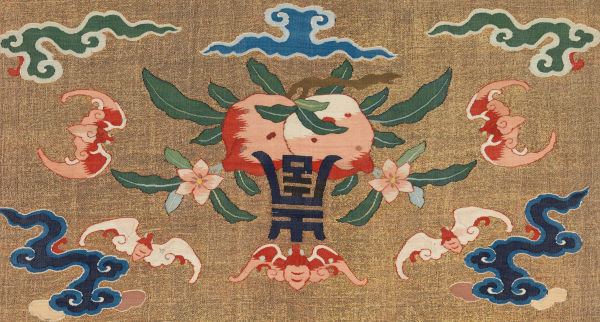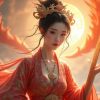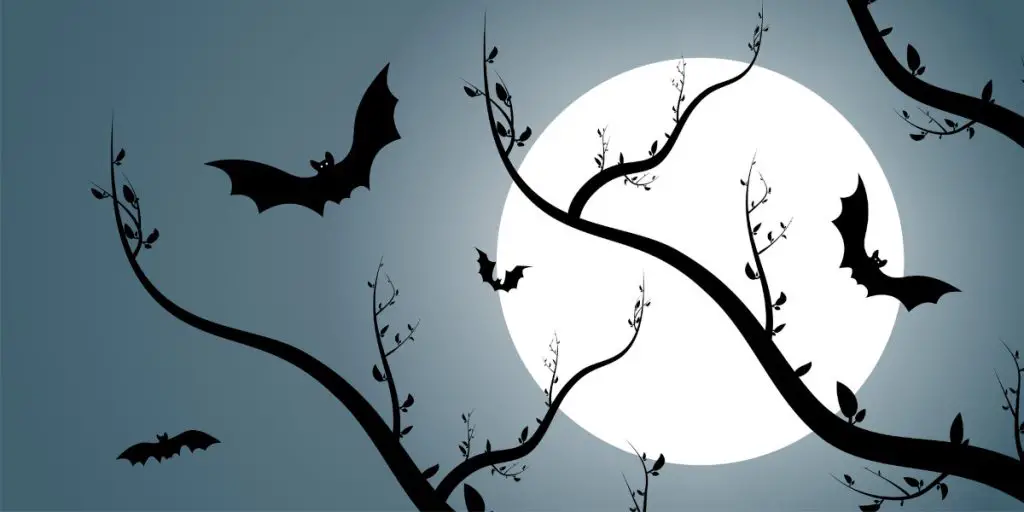
Throughout history, there have been cultural depictions of animals as either good or bad. One of the animals that appear in practically every culture’s art is the bat, which is a creature that is present all over the world. While bats are frequently linked with fear and darkness in Western society, in Chinese symbology and Feng Shui, they have a far more positive and fortunate significance.
In Chinese culture, bats are thought to bring good luck and happiness, so they are often used as a symbol of luck in art and literature. This article will explore the symbolism of bats in Chinese culture and Feng Shui, as well as their history and several meanings.
The Symbolism of Bats in Chinese Culture
In Chinese culture, bats have been used as a sign of good fortune and happiness since the Han Period (206 BCE–220 CE), when they were often portrayed in literature, art, and mythology. Bats have become a sign of hope and positivity in Chinese society due to their links with good fortune, happiness, and prosperity.
Several academics claim that a linguistic coincidence is the source of their importance. Due to the fact that Mandarin has an ideographic writing system rather than an alphabetic one, there are many homonyms or words that sound the same yet imply different things.
Because of this, words with various meanings get linked together depending on how they sound when pronounced. The Chinese character for bat, “蝠” (fú), shares a homophone with the character for good fortune, “福” (fú). Hence, the bat is linked to success and prosperity. Which is also why the word “fú” is one of the positive words that Chinese people have used from ancient times to the present to convey their aspirations to acquire what they consider to be significant in life: money, a good marriage, many children, and a long life.
Chinese artwork often depicts bats flying around a peach tree; as a result, it is a favorite decorating theme, especially around Chinese New Year. The Chinese character “福” (“fú”), which stands for luck and happiness and is a common adornment on front doors throughout China during the Spring Festival, echoes these sentiments. The Chinese tradition of writing the word 福 upside down has its roots in the fact that the bat hangs upside down while sleeping and resting. This is Fu Dao (福倒 or 蝠倒 ), a pun with the same pronunciation as Fu Dao (福到), which denotes the coming of happiness and blessings.
So, if an entering guest notices the “福” character placed upside down on the front door, he or she may comment, “Your fu character is upside down,” which is pronounced “Your luck has arrived!” in Chinese.
Bats and peaches of immortality are symbols of a desire for long life. These peaches are grown in the garden of Mother Queen of the West, a deity who resides in the Kunlun Mountains and bestows eternal life upon her devotees. According to tradition, a bat overheard a discussion between the Queen Mother of the West and the Monkey King in which the Queen Mother offered a prize to anybody who could bring her a ripe peach from her garden.
Check out our “Free Art Library“. We have compiled some great free resources, about Chinese art, for your research.

Being a smart creature, the bat flew to the garden, grabbed a peach from the tree, and gave it to the Queen Mother. In exchange, the Queen Mother granted bats the ability to see in the dark, which is why they are commonly associated with night and darkness.
Furthermore, the Compendium of Materia Medica 《本草纲目》(published in the 16th century) mentions that several bat components may be used to treat ailments. “Baopuzi,” credited to Ge Hong, an Eastern Jin dynasty (317–420) alchemist and philosopher, the book claims that in order to increase longevity to a million years, a thousand-year-old bat, which has an appearance similar to snow, should be powdered into medication and taken orally.
Chinese medicine has also used bats for hundreds of years. Many cures involve bat guano (feces), which is said to have therapeutic qualities. The liver of the bat is thought to be able to treat liver ailments, while the heart of the bat is thought to be able to heal cardiac issues.
In Chinese culture, the idea of yin and yang is also connected to bats. According to this theory, yin stands for the subconscious, femininity, darkness, and passivity, whereas yang is the symbol of light, masculinity, and action. Bats are regarded as the symbol of yin, indicating wisdom and intellect, due to their nocturnal activity and capacity for nighttime navigation.
In Chinese culture, bats are commonly related to the water element, which stands for wealth and prosperity.
Bats appear in Chinese holidays and rituals as well. During the Mid-Autumn Festival, lanterns in the shape of bats are hung in homes and public places to bring luck and happiness. Bat-shaped pastries (Ling Gok 菱角) are also made and eaten during this time.
Two bats depicted on a gift’s packaging convey well wishes and good fortune. On gifts given to newlyweds, two butterflies, a symbol of marital happiness, often accompany bats. Bats continue to elicit powerful, pleasant feelings in Asian cultures.
Chinese Mythology Diploma Course
- Certified Course
- Accredited Course
COURSE INFORMATION
- 10 Modules
- Lifetime Access
- Study Group Access
- Multiple Choice Assessments
Use “LIGHTWARRIORSLEGION466 ” code for 70% off.
Bats and the Five Great Blessings
In Chinese mythology, one of the best-known stories about bats is called “Wu Fu (五福),” which means “Five Blessings.” In accordance with the myth, five bats stand in for the five blessings of longevity, wealth, health, love of virtue, and peaceful death.
In Chinese art, the five bats are frequently depicted as a group, signifying the wish that these blessings be conferred upon the observer.
Because the number five is seen as lucky in Chinese culture, the five bats have more meaning when they are all together.
Longevity
Bats are referred to as creatures of permanence in Confucian literature that dates from 403 to 221 BCE. They are believed to have an unlimited lifespan and even to be immortal. In fact, Zhang Guolao is one of the Taoist pantheon’s Eight Immortals and is believed to be a spiritual white bat. This relationship is further emphasized by the fact that bats live in caves, which are said to be the entrance to the world of immortals.
Wealth
In Chinese, the word for bat sounds the same as the word for good luck. This is why bats are often associated with luck. It makes sense why the five bats are frequently shown on greeting cards, suggesting that the giver is wishing the recipient success and fortune.
Health
Since bats can hang upside down and have superb vision, people often associate them with being healthy. Chinese mothers have a tradition of putting bat-shaped jade buttons on their babies’ caps to wish them a healthy life.
Traditional Chinese medicine in ancient China made use of bat body parts. People searched for bats that were believed to be a thousand years old, silver-colored, and fed on stalactites or icicle-shaped minerals created in caves.
Love of Virtue
The Chinese consider possessing high moral standards to be essential for leading a fulfilling life. Since bats represent the love of virtue, they are seen as harmless, impressive creatures that are important to the balance of nature around the world. Even the Chinese god Zhong Kui, who battles spirits and pursues demons, is said to work with them
Peaceful Death
A peaceful death is considered a blessing by the Chinese. It’s usually taken to mean dying of old age without any pain or suffering. It’s said to be the end of a life’s work, with acceptance, comfort, and peace of mind.
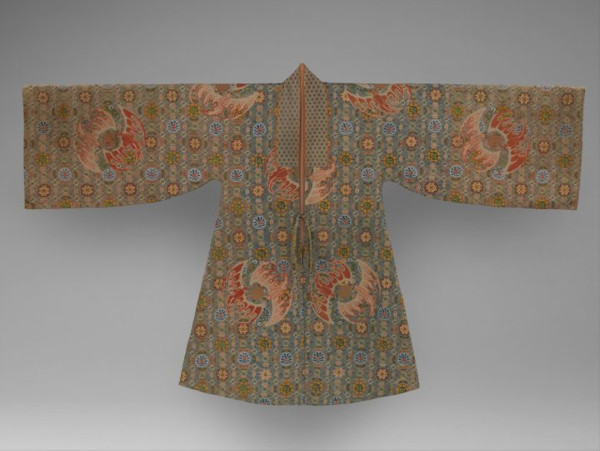
Five Bats Shown with Other Chinese Symbols
The five bats are shown with other Chinese characters and symbols, and those characters and symbols have a deeper meaning:
As red is viewed as a lucky color that brings good fortune, red bats are preferred. Moreover, the Chinese character for red has the sound “宏”; hence, when the two words are combined, “宏福”—a symbol signifying immense fortune—is created. It is believed that a painting or decoration featuring five red bats will provide an additional dose of luck. Apart from that, it’s also said that the color red guards against bad luck.
When bats are shown with a peach tree on a mountain, it’s just a way to say, “May you live as long as the southern mountains.” This is due to the peach’s associations with immortality and long life.
When depicted with a seascape, the five bats represent the Daoist Isles of the Fortunate. It might also be a way of saying, “May your happiness be as deep as the eastern sea.”
Bats are occasionally seen flying among the blue clouds. It is thought that the simple form of a cloud matches the shape of the elixir of immortality. Hence, it’s equivalent to “May you live a very long life.” Additionally, it can be a desire that one’s pleasure be as great as the heavens.
When the Chinese character for longevity is put with five bats, it makes a powerful symbol for good luck and a long life.
Sometimes, bats are depicted flying upside down, which has a positive connotation. The word “bat” (represented by the character fu) is believed to resemble the word “upside down” (represented by the character dao) or “arrive.” Combining the connotations of fu and dao creates the impression that fortune is falling from the skies.
Bats in Chinese Art
Bats are frequently seen in Chinese art. They may be seen flitting between the creases of cloth and chasing each other across exquisite china. Golden bats decorate the most beautiful altar cloths, while jade bats decorate jewelry. Several different items, including toys, scepters, saddles, sashes, and tapestries, are probably decorated with cute bats.
European and early American artists used bats and bat wings to show devils and demons. The Chinese, on the other hand, used the same winged mammals that many Westerners find repulsive to decorate their most treasured objects.
The Ming and Qing eras saw a rise in the popularity of long-life themes on everything from clothing to paintings, drinking cups, ornamental vases, and home décor. The most popular ones were the longevity character and legendary figures. Daoism soon led to a rise in the popularity of immortality themes.

Royal vases with bat decorations were very prevalent, which reflects the era’s style. Several porcelain designs included little red bats (the color of pleasure) flying among stylized blue clouds, which were connected with immortality. These patterns were occasionally combined with other patterns to produce creative work suitable for a variety of situations.
Chinese painters have long used five bats to symbolize the five blessings—health, long life, prosperity, love of virtue, and peaceful, natural death. The five bats actually started to appear often on porcelain during the Yongzheng Dynasty in China (1723 to 1735). They’re sometimes shown with peaches and peach blossoms, where the former represents longevity and is thought to provide immortality, while the blooms signify spring and the symbol of marriage.
Also, it was usual to see bats adorning palaces and other important buildings, particularly emperors’ thrones. There were even decorations that had bats flying across tapestries and fabrics or carved in ivory and jade. Five bats were soon the most common topic for artwork, furniture, décor, clothes, and jewelry.
Thousands of years prior to the birth of Christ, the Chinese began to admire bats. The male and female active and passive forces were seen to constantly interact in the Oriental culture. Bats were believed to represent the masculine essence, while flowers and fruits represented the female.
The peach, a traditional feminine fertility symbol, was frequently shown with the bat. We now understand that the association between peaches and bats represents both a mystical and ecological relationship. Peaches, one of man’s most beloved fruits, were originally cultivated in China about 5,000 years ago. Formerly, peaches relied on bats to spread their seeds.
The Symbolism of Bat in Feng Shui
Bat symbols are popular feng shui cures for wealth in China. They frequently appear in the patterns of furniture, cushions, money bowls, Chinese coin tassels, and amulets. They are seen as protective against disease and a safeguard against evil. By including bats in your home or place of business, you may draw in good vibes and improve the environment’s overall energy flow.
Bats may contribute to the creation of a peaceful and prosperous environment, whether you want to employ bat-shaped items or incorporate them into other Feng Shui cures.
The five bats are frequently used to represent the Five Blessings since five is also thought to be an auspicious number in Chinese culture. The Five Elements, a key concept in Chinese teachings, are connected to the number itself.
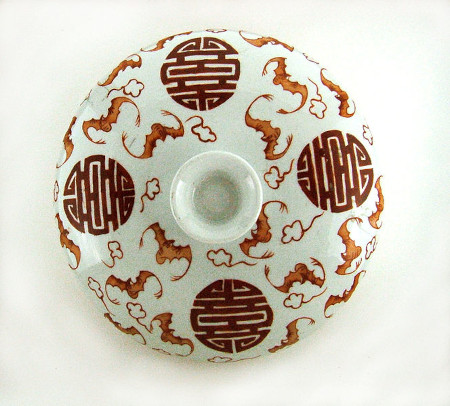
The following are some Feng Shui applications of bat symbolism:
- Bat-shaped things: Employing bat-shaped objects, such as bat-shaped mirrors or ornaments, can assist in bringing positive energy into your home. These items are said to create a peaceful and balanced environment by reflecting good energy and deflecting bad energy.
- Bat imagery: Adding images of bats to your house or place of business can also aid in bringing luck and wealth. To draw good energy into your property, place ornamental items like figurines and artwork featuring bats in strategic locations like the entryway or the corner of wealth.
- Colors connected with bats: Black, purple, and gold are just a few colors that might help boost the good energy in your environment. These colors are said to bring wealth and prosperity and may be incorporated into your home through accessories like throw pillows, carpets, and curtains.
- Plants linked with bats, such as night-blooming jasmine or moonflower, can also aid in improving the energy in your area. It is believed that these plants attract the energy of bats and promote good fortune and prosperity.
- Furniture in the shape of a bat: By using furniture in the shape of a bat, such as chairs or tables, you may also help adopt the symbolism of bats into your environment. You can use these pieces as the focus of your decor, and they can help bring you success and happiness.
- Also, the number of bats utilized should be odd rather than even since it is thought that this will bring forth more positive energy.
To be fair, it is true that the Western world does not frequently employ the bat symbol in feng shui applications.
The Western world has a negative perception of bats. They spread viruses and have associations with witchcraft, black magic, vampires, haunted castles, evil witches, and the dark. Therefore, they are rarely used in feng shui applications. After all, feng shui cures are heavily influenced by culturally specific symbols, so they may differ from one region to the next.
As you may already be aware, feng shui symbols have a strong connection to the symbolic level that is culturally significant; therefore, you should choose a symbol for a feng shui remedy based on its meaning to you rather than what it implies in feng shui literature.
Related reading: Owls in Chinese Culture and as Feng Shui Symbol – Opens in new tab
The Feng Shui Placement of Bat Symbol in Your Home
If you want to use bats in Feng Shui to bring in good energy and luck, there are a few things you should keep in mind when putting bat figurines or pictures in your home or office.
- It’s best to put bats in the southeast corner of your home, as this is the area that is linked to prosperity and wealth.
- The bats must be placed in an area where they will be visible and easy to spot. This will make it more likely that their impact and positive energy will be felt throughout the entire area.
- Avoid putting bats in cluttered or messy environments. This can disrupt the movement of energy in the space and reduce the bats’ beneficial influence.
- One way that red bats are often shown in art is by coming out of a vase or jar. This suggests a pleasant existence with few obstacles in addition to good luck and joy.
- The bat is also occasionally represented biting a golden coin, and this plaque is adorned with a mystic knot and a red tassel. It is usually hung in the front of your house or at the main door or other chi entry points to bring wealth, health, good luck, and a natural death at an old age.
- The bats can be hung in the west or northwest to bring out the metal element for a happy family and mentor luck to get help from helpful and important people.
- Putting them outside could put them in danger, and if they don’t feel welcome in the house, they might take their lucky energy somewhere else.
- Another depiction of feng shui bats that some people may have seen features five bats, five swastikas, and a longevity symbol. The bats and swastika form a circle around the longevity emblem as if they are bestowing strength on it. This set-up represents prosperity and happiness throughout a long life.
- Because red bats are generally seen as symbols of good luck, they can be used as decorations almost anywhere inside a house.
- Double happiness comes from a pair of bats.
- It would be best to keep these small animals in communal spaces like the living room or kitchen so that everyone in the home can benefit from their positive energy.
- It is probably not a good idea to have bats displayed in areas where other birds are kept as pets, since you don’t want the bats to feel threatened. When they see a cage, it can make them worry that they will lose their freedom.
- Choose figurines or images of bats that are made of high-quality materials and are appealing to the eye. This will make it more likely that the bats will contribute to the general harmony and beauty of the area.
🍀 Our “Feng Shui Master” app is your trusted companion, offering a useful guide to implementing Feng Shui principles. Try it now!
Bats in your house—what does it mean?
The Chinese believe that because bats have highly developed sensory organs that can “smell” out locations with auspicious chi, they only build their nests in fortunate locations.
When real bats seek shelter at your home, it is one of the greatest omens of incoming money luck, since the bat is a symbol of wealth and success. Hence, unless it’s absolutely essential, don’t chase them away.
You don’t have to feed them generously every day to demonstrate your deservingness of the good fortune they offer. Leaving them alone rather than treating them like a pest would be adequate.
Since they’ve been to your house, they must already think you’re good enough. But if you chased them away, they would definitely think differently of you.
Conclusion
In conclusion, the significance of bats in Feng Shui and Chinese culture is both intriguing and significant. As they are connected to luck, wealth, and happiness, bats are frequently used in Feng Shui to bring luck and good fortune.
Even though bats are associated with good things in Western culture, they are sometimes misunderstood. Nevertheless, there is no denying their continued significance in Chinese symbolism and culture as a sign of blessings. If you want to use bats in Feng Shui to attract positive energy and good luck, keep the above ideas in mind while placing bat figurines or images in your house or business.
Want to learn more about Feng Shui? Check out our suggestions: Feng Shui Bookshelf – Opens in new tab
Stay in Touch
 Join our newsletter by using the forms on this website or click here!
Join our newsletter by using the forms on this website or click here! Follow us on Google News
Follow us on Google News Follow us on Facebook
Follow us on Facebook
Feature Image from Depositphotos


